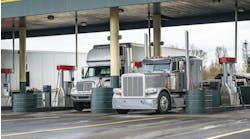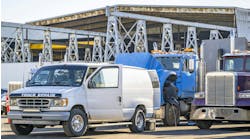The state of fleets in 2024 includes emphasis on business agility, data utilization
Today’s economic challenges are undoubtedly different from those experienced during the pandemic years, but make no mistake, they are still challenges. Heavy-duty fleets continue to be pinched by a multitude of economic factors, and those organizations that lead with business agility will be the ones that take a leadership position.
The current state of the economy
Operating a heavy-duty fleet today comes with the understanding that we’re in a pivotal time. There is no doubt that today’s challenges feel familiar to those of the last few years, such as driver shortages, rising insurance rates, and an economy with persistently high interest rates. Because of these challenges, it has never been more critical for transportation fleets to rely on a KPI-driven asset management plan that focuses on shortening equipment life cycles to create the lowest possible total cost of ownership.
Perhaps there is some good news. Industry analysts at ACT Research expect U.S. freight fundamentals to improve this year. Entering the year, freight demand was below typical trends, but industry observers expect it to rebound, driven primarily by continued consumer spending and subsequent retail sales activity, according to ACT. What’s more, organizations with private fleets are faring better than for-hire carriers, especially as these businesses face harsher realities of the challenging economy.
The importance of implementing a strategic plan
It is also important to note that a growing number of economists believe the Federal Reserve is feeling a higher level of confidence that inflation is more closely aligned with their target, and interest rates could begin to decline at some point this year. This would mark an important step for any fleets planning to invest in new trucks and equipment, especially as equipment costs have become a serious issue for many. Immediately following the pandemic, supply chains made availability a major problem. Today, it is no longer about availability and, instead, more about the cost of entry into new equipment.
This is a fundamental reason why fleets need to have a strategic, multiyear procurement plan established around a methodical and disciplined approach to life cycle management. A multifaceted approach is key to achieving more business agility and enabling fleets to adapt to changing market conditions. By doing so, organizations can inject more flexibility into truck acquisition decisions while maintaining strong fundamentals for managing TCOs and bottom lines.
See also: Will the freight economy warm up in spring?
Why data technology is so critical in 2024
Data has become a focal point for fleets, and in 2024, it will be a must for organizational decisions. One area of data that continues to grab many headlines is artificial intelligence. While there is a lot of hype around AI, data drives all of these sophisticated tools. Using inaccurate data for AI systems will have detrimental results for any organization's business strategy.
Today, this data has expanded to include predictive modeling, which companies scrutinize to plan out their fleets’ life cycles. This data has been proven to achieve desirable goals, and fleets leveraging this approach are some of the most competitively aligned in the industry today and ready to weather any changing market conditions.
A new focus on lowering emissions
Adopting more electric trucks is also a factor in many of today’s changing market conditions because of new regulations and mandates proposed to satisfy more stringent environmental requirements. Many fleets are now basing organizational decisions around sustainability strategies rather than solely adopting electric trucks. They are focusing on emissions reduction strategies instead of simply going “all in” on alternative-fuel equipment. Clean diesel and even hydrogen are much more in focus today, and they are both playing a significant role in companies’ decisions for emissions reduction strategies.
In a benchmarking survey conducted two years ago, we asked which type of alternate fuel fleets are most interested in. In that survey, 65% of respondents said they were most interested in electric trucks, while 15% cited hydrogen and 25% CNG. Forty-five percent of the respondents also noted that the time frame to deploy alternative-fuel trucks would be five to 10 years.
Almost one year later, we see those numbers shifting, with 33.3% indicating EV over the next five to seven years (29.6% saying another 10 years) and 38.5% indicating hydrogen. This timetable for electric truck adoption continues to change, as just two years ago, the majority (54%) said they didn’t plan to deploy electric trucks for five to 10 years.
The increased focus on legislation mandating the transition to zero-emission vehicles is causing fleets to closely monitor the impact that these mandates may have on acquisition plans. According to the survey, 59% of respondents are either expediting their procurement plans because of CARB prebuy or closely monitoring to see how it may alter their plans.
The timeline and emphasis on CARB prebuy continue to shift. According to ACT Research, the new standards will result in the largest Class 8 truck prebuy ever leading up to 2027, beginning in 2025 into 2026, with the cost of diesel trucks increasing between $25,000 and $30,000 more per unit. This is another reason why fleets must view flexibility as a business strategy, not just a fad.
As fleets ponder their strategies for the year's balance, many will certainly be focused on interest rates and how they will affect their organizations. They must rely on proven data so they can make smart, informed decisions that will have long-term benefits without financial missteps. They must have a larger focus on their business above and beyond what the Fed’s actions are. They must manage their life cycles with the right strategy and multiyear procurement plan.
With this in mind, fleets will continue to understand that by improving the performance of their trucks, they will improve the health of their business and achieve their sustainability goals in 2024.




